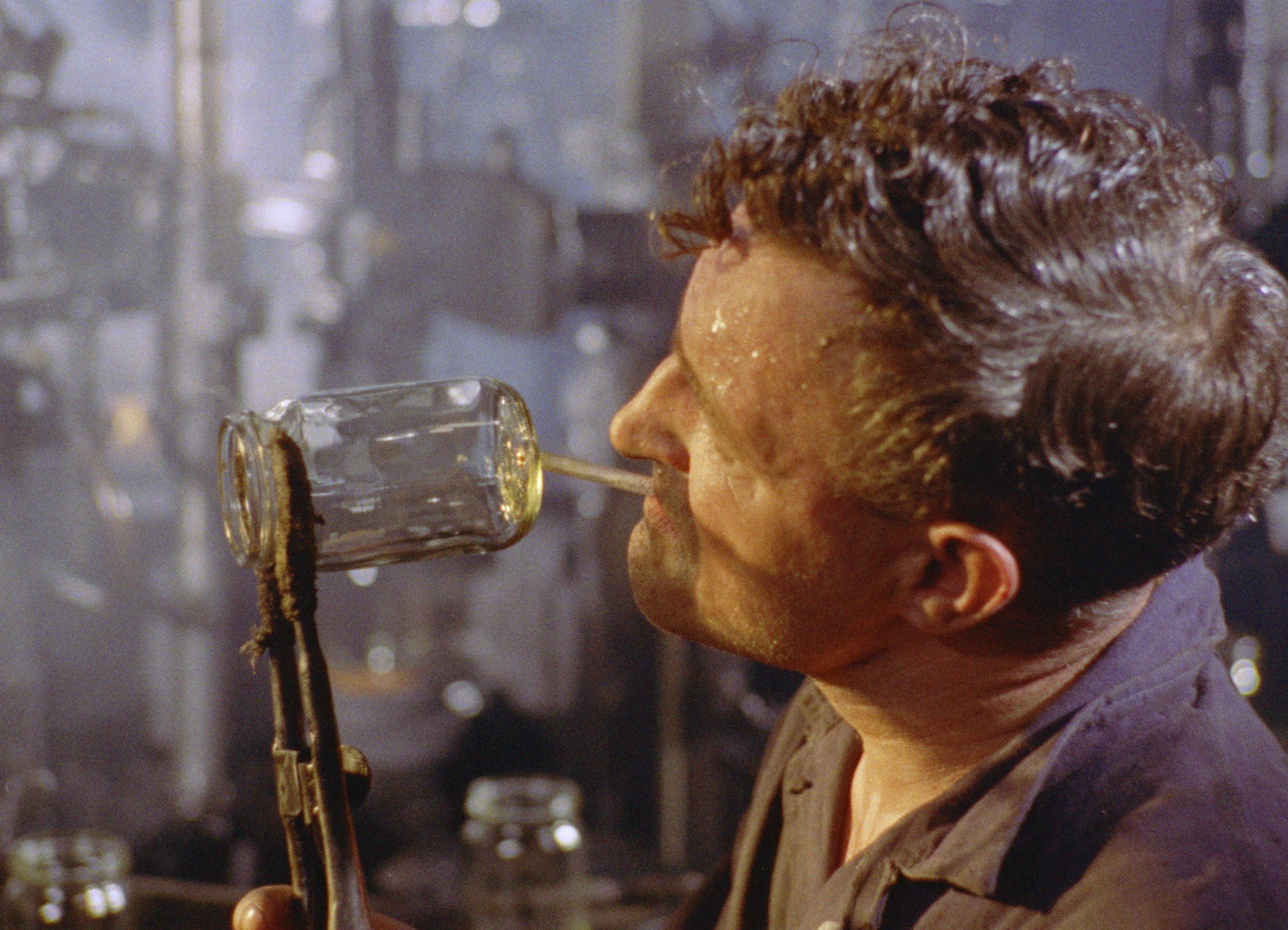
Glas
In the glassworks of Leerdam glass objects are made in two ways: manually and mechanically. The glassblowers work according to traditional methods. Driven by fantasy and craftsmanship, they skillfully shape their fine articles. In mechanical glass manufacturing machines turn out series of glass products at a high speed. During the latter process every deflexion is fatal. In order to correct the mistake a human hand is yet again required. This is clear when there is a malfunction in the bottle machine.
Glas is true film poem. With a poet's eye Haanstra captures the movements involved in blowing glass by hand and by machine.
*** Tekst uit dubbele memo ***
When Bert Haanstra was commissioned to make an industrial film about the manufacture of glass in the Leerdam glassworks, he soon realised that more could be made of this visibly invisible subject than merely a dry, boring film that takes us from raw material to end product. On his own initiative, he decided to make a short artistic film. In GLAS, we see the art of glassblowing as a rhythmical play between hot glass and the precise timing of a craftsman. A complicated, dexterous ballet demonstrates the art in traditional glassblowing. This contrasts with the bigger glassworks, where everything is well-ordered. But things can go wrong there, too, and human hands are the ministering angels in the production process. Pim Jacobs composed the accompanying jazz music. In 1959, Haanstra received an Academy Award for Best Documentary Film for GLAS.